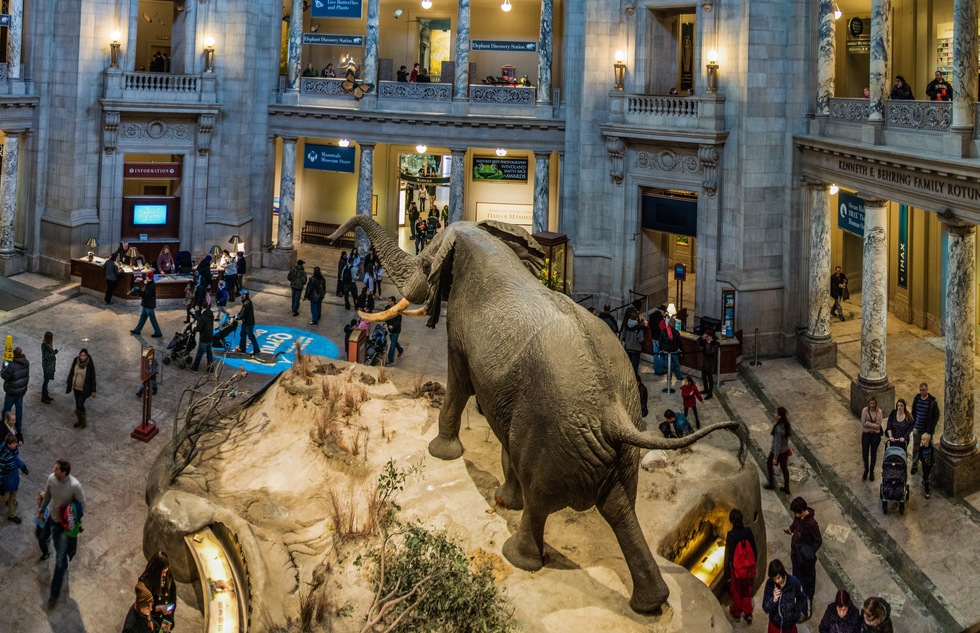Fair warning: For many visitors, this museum can be just too much. Not only is it the most visited museum in town (get ready to fight the crowds!), but there are so many exhibits, and so many items within the exhibits, that it's easy to experience sensory overload. With 146 million artifacts and specimens, 325,000 square feet of public space; and about 5 million people visit annually, this is the most visited natural history museum in the world.
Best advice: Use this guide and the museum’s website to develop a strategy before you arrive. For instance, as the website suggests, try to visit on a Monday, Tuesday, or Wednesday, or on any weekday in September or February, when crowds are sparser. And if you still find yourself feeling overwhelmed on arrival, do as I did on a recent visit to the busy museum: Go up to one of the green- or tan-vested “Visitor Concierges” you’ll see roaming the museum and ask them to name the two must-see things they would recommend in the particular exhibit. A concierge I approached in the Sant Ocean Hall responded immediately with the “live coral reef” and the “shark mouth,” pointing me to these in the vast hall. Perfect suggestions. The variously colored coral reef tank holds fish of brilliant blue, purple, yellow, and pink hues. The enormous jaw of a Carcharodon megalodon, a shark that lived 5 million years ago, is enclosed in a glass case; the idea is for you to pose behind the glass case so that it appears as if you’re inside the mouth—a great snapshot.
The museum has 22 different galleries, with exhibits that cover the story of natural history from the earliest beginnings of life to the present. The popular Fossil Hall is a massive 31,000-square-foot exhibition space featuring some 700 specimens, including an Alaskan palm tree, early insects, reptiles and mammals, and dramatically posed giants like the meat-and-bone-eating tyrannosaurus that stomped the earth 66 million years ago. It’s not just dinosaurs, either: A mastodon, woolly mammoth, and prehistoric shark are on display, too.
Meanwhile, across the Rotunda from this exhibit, the Hope Diamond is still holding court in its own gallery within the Geology, Gems and Minerals area. (The deep-blue, 45.52-carat diamond has a storied past, which you can read about in one of our suggested walking tours.) The second floor is also where you’ll find a small showpiece on 3,000-year-old mummies, notable for the beautifully decorated coffins on display; and the bone hall where visitors compare the skeletons of everything from dogs and cats to flying fish and a gray whale.
What to pick? That’s up to you. Good luck.






 About our rating system
About our rating system


